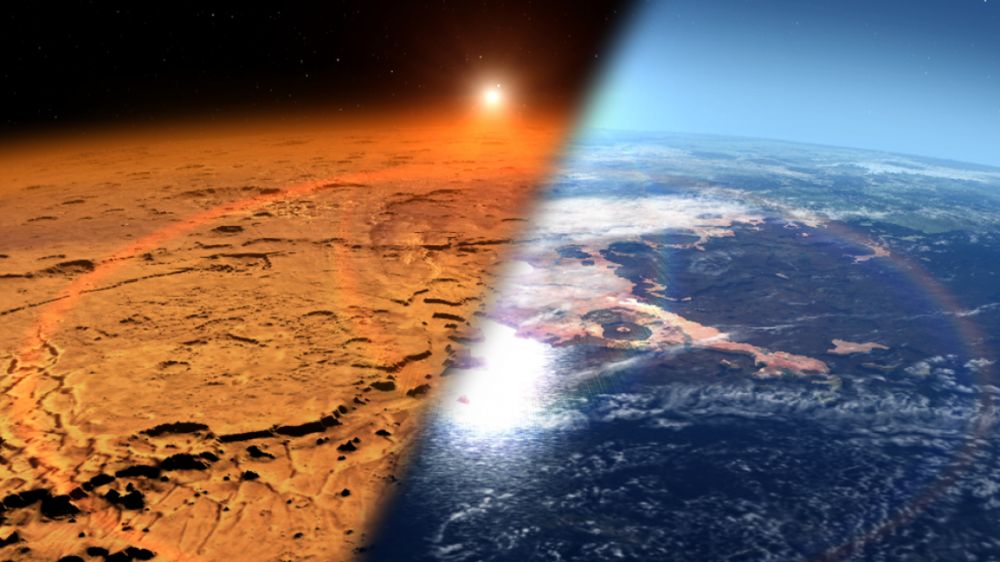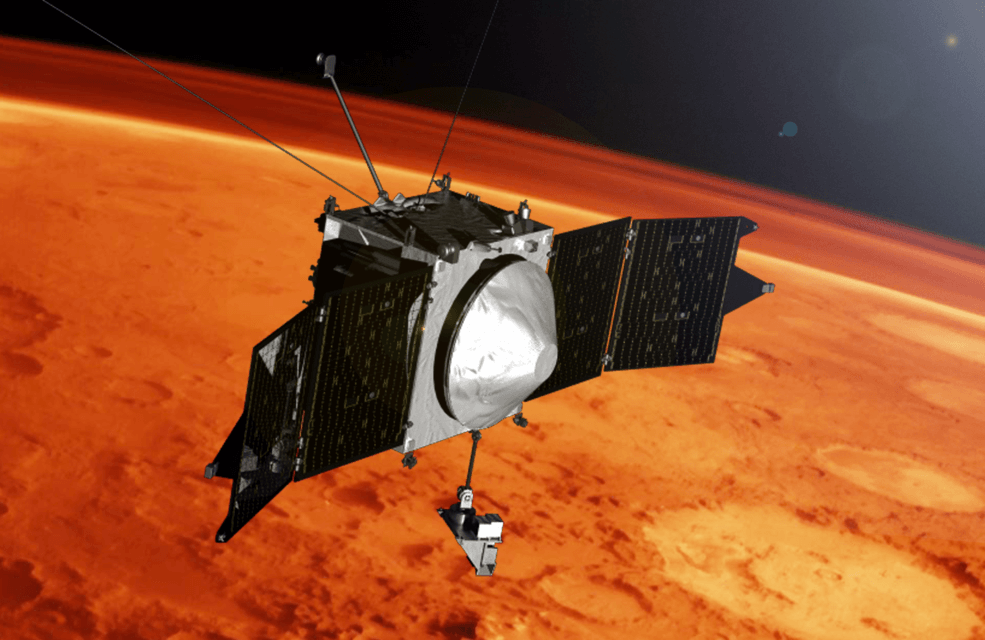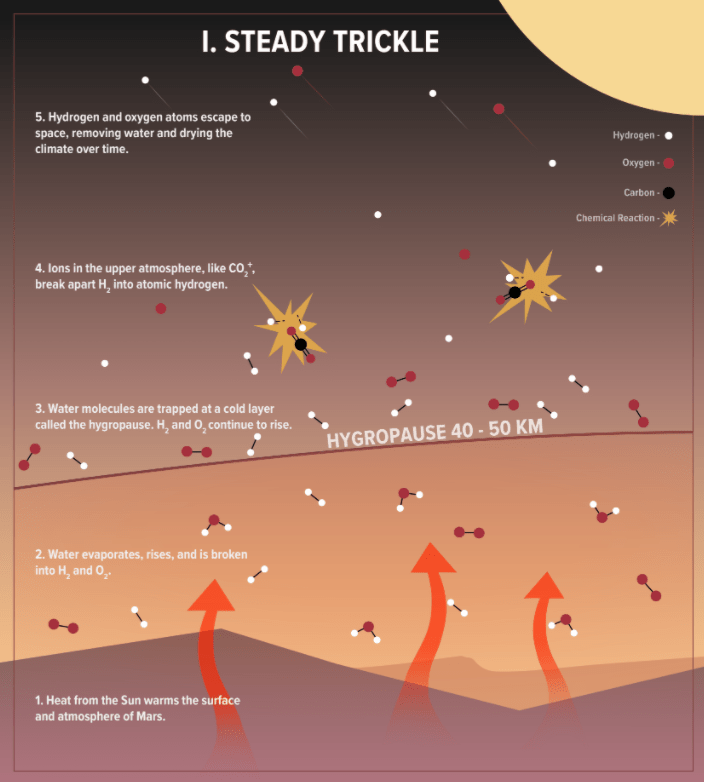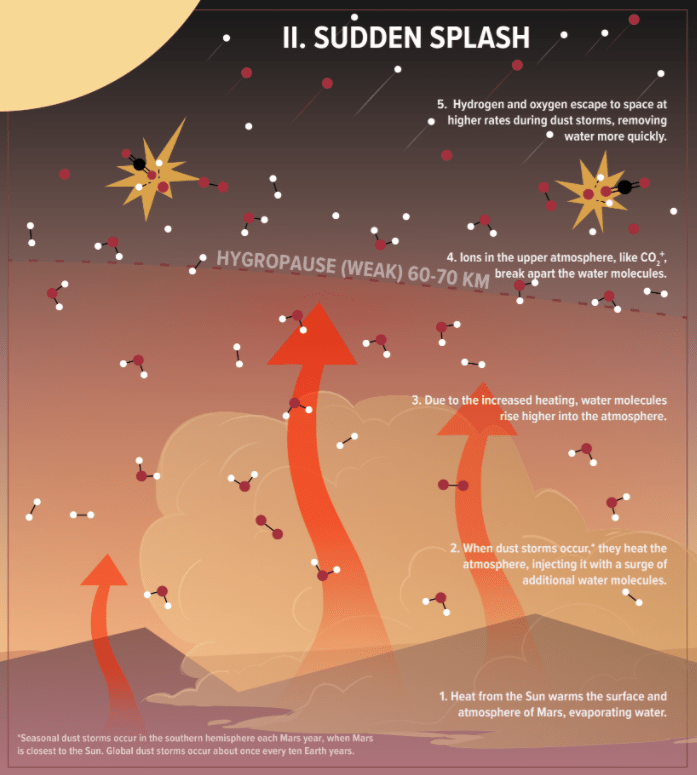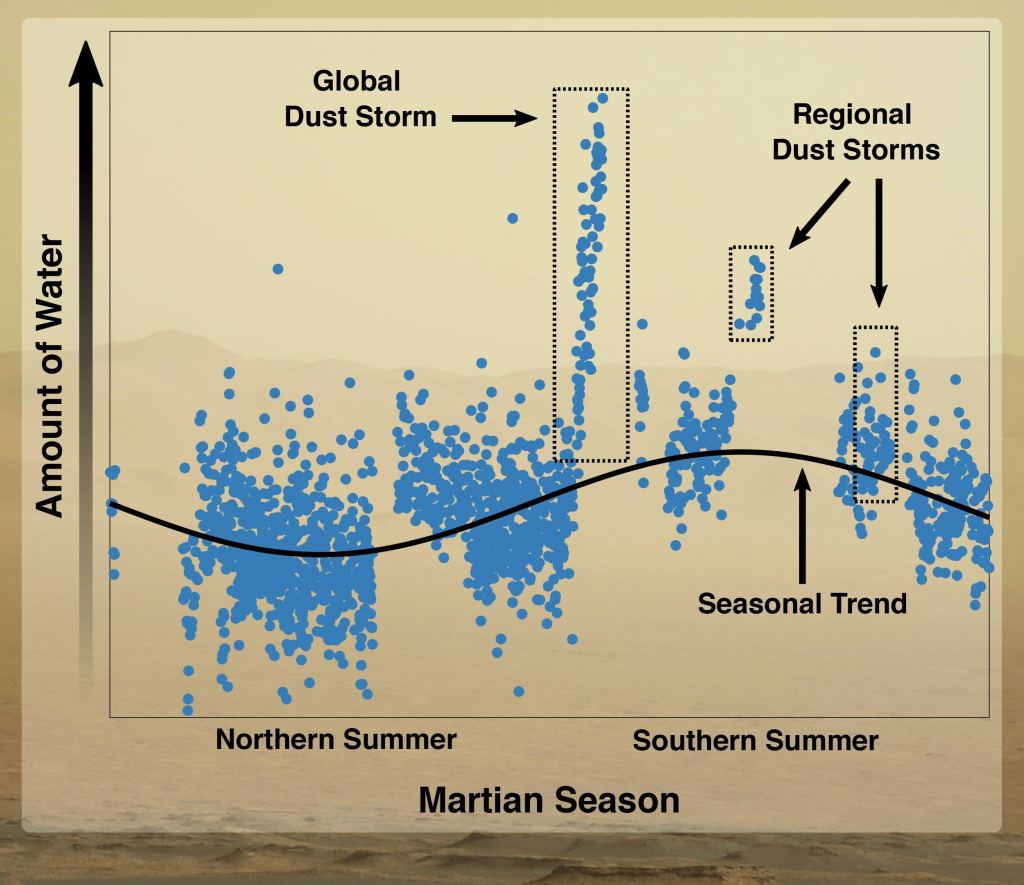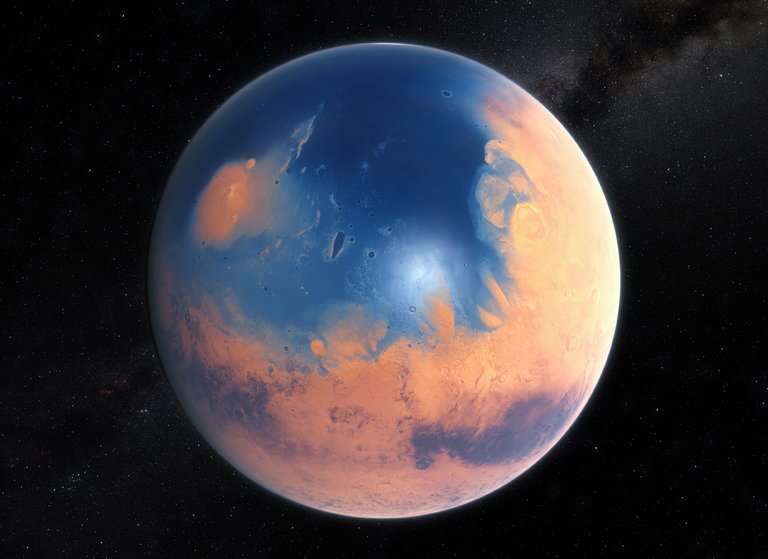Mars is an arid place, and aside from a tiny amount of water vapour in the atmosphere, all water exists as ice. But it wasn't always this arid. Evidence of the planet's past wet chapter dots the surface. Paleolakes like Jezero Crater, soon to be explored by NASA's Perseverance Rover, provide stark evidence of Mars' ancient past. But what happened to all that water?
It disappeared into space, of course. But when? And how quickly?
A new study says that Mars lost its atmosphere and water relatively quickly. Within a short period of time, geologically speaking, all that water disappeared, aided by dust storms.
The new study's title is " Hydrogen escape from Mars is driven by seasonal and dust storm transport of water." The lead author is Shane Stone, a former laboratory chemist who is now a graduate student in the University of Arizona Lunar and Planetary Laboratory. The paper is published in the journal Science.
This new research is centred on data from NASA's MAVEN (Mars Atmosphere and Volatile Evolution) spacecraft. MAVEN's job is "to investigate the upper atmosphere and ionosphere of Mars and how the solar wind strips volatile compounds from this atmosphere." MAVEN's been orbiting Mars since 2014 and its mission should last until 2030.
"We know that billions of years ago, there was liquid water on the surface of Mars," Stone said in a press release. "There must have been a thicker atmosphere, so we know that Mars somehow lost the majority of its atmosphere to space. MAVEN is trying to characterize the processes responsible for this loss, and one portion of that is understanding exactly how Mars lost its water."
About every 4.5 hours, MAVEN dips lower into the Martian atmosphere and measures charged H2O ions with a spectrometer. It takes these measurements at about 161 km (100 mi) above the planet's surface. It also performs deeper dips into the atmosphere, where it dives down to about 125 km (77.6 mi) for 20 orbits at a time, with each dip lasting five days. At that altitude, the atmosphere is much denser.
MAVEN's mission profile means it can take measurements throughout Mars' entire upper atmosphere and at different latitudes. With repeated measurements, scientists can calculate the amount of water vapour in the atmosphere.
MAVEN found a surprisingly large amount of water vapour in Mars' upper atmosphere, where it's rapidly removed. The water and its destruction is a tantalizing clue to Mars' ancient history.
Hubble has been watching Martian water along with MAVEN, and both missions have found that Mars' water loss is subject to the planet's seasons. When the planet is closest to the Sun, the warming melts more of the planet's water ice. The vapour then rises to the upper atmosphere where it dissipates into space.
In their study the authors point out that "A repeatable seasonal trend occurs in the H2O abundance in the upper atmosphere, which peaks in southern summer between LS = 250° and 270°..."
But seasonal warming is only one contributing factor in water vapour loss.
"The seasonal and dust storm–mediated delivery of water to the upper atmosphere could have played a substantial role in the evolution of the Martian climate from its warm and wet state billions of years ago to the cold and dry planet we observe today."From "Hydrogen escape from Mars is driven by seasonaland dust storm transport of water" by Stone et al, 2020.
The planet's dust cycle also contributes to water and hydrogen loss. Stone and the other researchers behind this work found that dust storms—both regional ones and the global ones that occur about every 10 years or so—also warm the atmosphere, leading to more rapid water loss.
Specifically, they found that "During the global dust storm of June 2018, the mean H2O mixing ratio increased by a factor of 2.4, from a mean value of 3.0 to 7.1 ppm over 2 days. The water abundance then continued to increase following the seasonal and dust storm trends, reaching values >60 ppm at LS = 204°. This event included the highest persistent H2O abundances we observed, holding at tens of ppm for more than 5 months at the end of 2018."
These results contradict the existing model of Martian water loss. According to that understanding, water ice sublimates into water vapour and is destroyed by the Sun's unimpeded radiation in the lower atmosphere.
As the authors explain in their paper, "Early studies of H production and escape neglected ionospheric destruction of H2O because H2O was assumed to be confined to low altitudes by a hygropause. Later, it was found that the hygropause varies in altitude with season, leading to speculation that H2O saturation may not occur at all during dust storms, owing to elevated temperatures."
These new results overturn some of that knowledge.
"This is important because we didn't expect to see any water in the upper atmosphere of Mars at all," Stone said. "If we compare Mars to Earth, water on Earth is confined close to the surface because of something called the hygropause. It's just a layer in the atmosphere that's cold enough to condense (and therefore stop) any water vapor traveling upward."
The hygropause is one of several "pauses" in planetary atmospheres. Essentially, they're a region where something changes. Earth's most well-known one might be the tropopause between the troposphere and the stratosphere. In the stratosphere, the temperature increases as you go higher, but in the troposphere the temperature decreases with altitude. The tropopause is the region between the two.
The hygropause is similar. Kley et. al. in 1979 found that on Earth, there's an increase in water vapour mixing ratio with higher altitudes through the stratosphere. But 2 or 3 km above the tropopause there's an absolute minimum of water vapour mixing ratio. They named it the hygropause.
The hygropause is basically a cold region that causes water vapour to condense and to stop travelling upward. As Stone says, there should be no water vapour above the hygropause. But there is, and according to the team of researchers, that means that Mars' hygropause is simply not cold enough to force the vapour to condense.
Since Mars' hygropause is weak, the vapour travels high enough into the upper atmosphere that the ions are broken apart very quickly, and the resulting byproducts are lost to space.
"The loss of its atmosphere and water to space is a major reason Mars is cold and dry compared to warm and wet Earth. This new data from MAVEN reveals one process by which this loss is still occurring today," Stone said.
But how did this play out in Mars' past? Mars was once warm and wet, maybe on several separate occasions. What does this new knowledge tell us about Mars' past?
The team took their findings and worked backwards one billion years. They found that this water loss mechanism could've accounted for the partial loss of a global ocean if Mars did indeed have one.
"If we took water and spread it evenly over the entire surface of Mars, that ocean of water lost to space due to the new process we describe would be over 17 inches deep," Stone said. "An additional 6.7 inches would be lost due solely to the effects of global dust storms."
Global dust storms play a critical role in water loss. During one of those mammoth storms, up to 20 times more water can be carried into the upper atmosphere. As a press release accompanying the study says, one global dust storm of 45 days can transport as much water vapour into the upper atmosphere as during a regular storm-free Martian year of 687 Earth days.
There are limitations in this study though. The team wasn't able to extrapolate back further than one billion years, because it's unlikely that the hygropause was the same that long ago. It was likely stronger, meaning it was more difficult for water vapour to reach the upper atmosphere.
"Before the process we describe began to operate, there must have been a significant amount of atmospheric escape to space already," Stone said. "We still need to nail down the impact of this process and when it began to operate."
Stone has another target in mind for similar atmospheric studies. Saturn's moon Titan has its own dynamic atmosphere where organic chemistry is active. It's also the only Solar System body other than Earth with liquid on the surface.
"Titan has an interesting atmosphere in which organic chemistry plays a significant role," Stone said. "As a former synthetic organic chemist, I'm eager to investigate these processes."
 Universe Today
Universe Today
